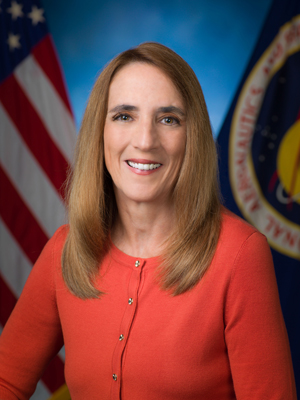- Professor of Practice, Industrial & Systems Engineering and Aerospace Engineering
- Don Lummus '58 Professorship of Practice in Engineering
- Director, Texas A&M Space Institute
- Affiliated Faculty, Multidisciplinary Engineering and Engineering Academic and Student Affairs
- Phone: 979-458-2342 (ISEN), 979-845-3839 (AERO)
- Email: currie-gregg@tamu.edu
- Office: ETB 4080 (ISEN), HRBB 722C (AERO)
- Website: Research Website
- Linkedin: Nancy Currie-Gregg
- Twitter: @Astro_Buckeye

Educational Background
- Ph.D., Industrial Engineering, Specialization in Human Factors Engineering and Artificial Intelligence; University of Houston - 1997
Research Interests
-
- Spacecraft occupant protection
- Aerospace human systems integration
- Human-robot interaction
- Quantitative risk analysis
- Systems safety engineering
Industry Experience
-
- 35 years of government and military experience – Member of the U.S. Senior Executive Service and Retired Colonel, U.S. Army
- NASA astronaut with over 1,000 hours in space during four missions – STS-57, StS-70, STS-88, STS-109
- Served in senior engineering positions at NASA, including deputy director of engineering, chief engineer and principal engineer
- Led the Space Shuttle Program Safety and Mission Assurance Office, directing efforts enabling the safe return of the Space Shuttle following the Columbia accident
Awards & Honors
- United States Government Presidential Rank Award, Meritorious Senior Professional – 2015
- NASA Exceptional Service Medal – 1998, 2012
- Distinguished Alumni Award, The Ohio State University College of Arts and Sciences – 2011
- Army Aviation Association of America Hall of Fame – 2010
- Industrial Engineering Academy of Distinguished Alumni Award, the University of Houston – 2010
- NASA Outstanding Leadership Medal – 2005
- NASA Quality and Safety Achievement Recognition Award – 2005
- NASA Distinguished Service Medal – 2003
- Distinguished Alumni Award, Ohio State University – 2000
Selected Publications
- Currie-Gregg, N., et al. 2018. "Development of a human vibration finite element model for use in spacecraft coupled loads analysis." Journal of Low Frequency Noise, Vibration and Active Control, Special issue on Evaluation and Attenuation of Negative Effects of Whole Body Vibration on Human Body.
- Currie-Gregg, N., et al. 2018. "The Perennial Challenge of Human Systems Integration." In Williams, R. and Doarn, C. (eds.), Engineering, Life Sciences, and Health/Medicine Synergy in Aerospace Human Systems Integration. Washington, D.C.: NASA.
- Currie-Gregg, N., et al. 2017. "Analysis of Anthropomorphic Test Device (ATD) Response for Proposed Orion Crew Impact Attenuation System" (NASA/TM-2017-219657, Vols. 1-6). Hampton, VA: NASA Langley Research Center.
- Currie-Gregg, N., et al. 2017. "Occupant Protection Modeling and Injury Prediction for NASA Human Exploration Spacecraft." In D. Cassenti (Ed.), Advances in Intelligent Systems and Computing (Vol. 591, pp. 195-206). Cham, Switzerland: Springer.
- Currie-Gregg, N., et al. 2013. "Space telerobotics: Unique challenges to human-robot collaboration in space." In D. B. Kaber (Ed.), Reviews of Human Factors and Ergonomics (Vol. 9, pp. 6-56). Santa Monica, CA: HFES.